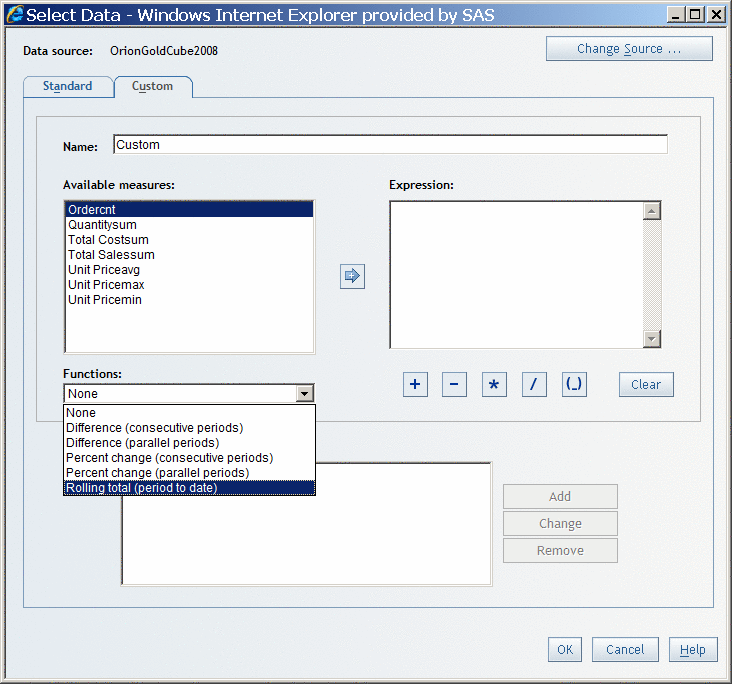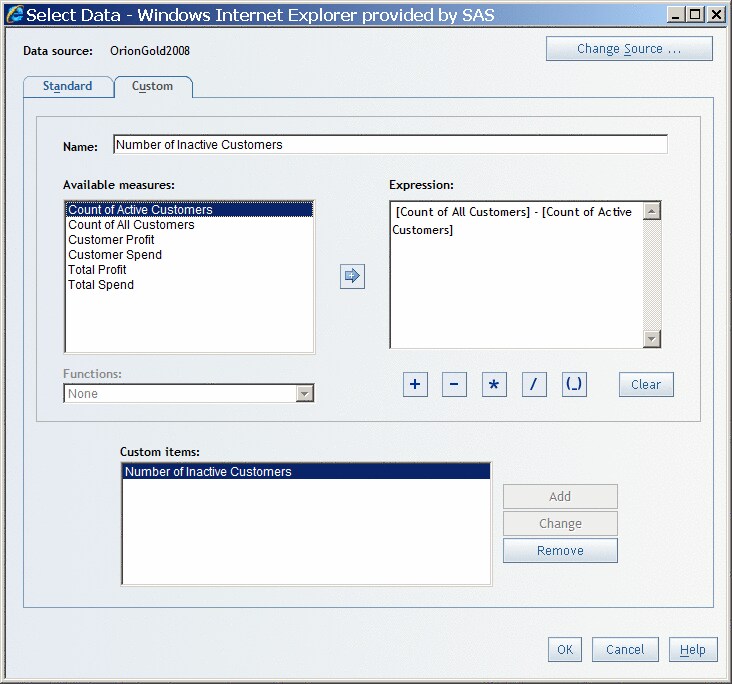Using Custom Data Items in a Query
About Custom Data Items
When a
data source does not contain a calculation that you want to use in
a query, you can use the measures that are contained in the data source
to create a custom data item. There are two types of custom data items
that you can create:
-
You can use one or more measures in a selected data source to create a new calculation. For example, you could create a custom data item called
Profit, which is created by using this expression:[Revenue]-[Cost], whereRevenueandCostare measures in a data source. You also could create this expression:[Total_Retail_Price] / 1000000, whereTotal_Retail_Priceis the measure divided by 1 million. For more information, see Create a Custom Data Item by Entering an Expression. -
If your query includes a time hierarchy from a multidimensional data source, then you can create a custom data item that is based on relative time. For example, you might create these expressions:
Percent change (parallel periods)[Revenue], where[Revenue]is the selected measure, orRolling Total (period to date)[COST_N], where[COST_N]is the selected measure. For more information, see Create a Custom Data Item That Is Based on Relative Time.
Create a Custom Data Item by Entering an Expression
-
Type an arithmetic expression into the Expression field. The expression is evaluated based on the aggregated values of the measures that you selected. (Within SAS Web Report Studio, it is not possible to produce a detailed calculation.)Items That Can Be Included in a Custom Data Item Expression contains some items that you can include in an expression.
Create a Custom Data Item That Is Based on Relative Time
If your
query includes a time hierarchy from a multidimensional data source,
then you can create a custom data item that is based on relative time.
Complete these steps:
-
Select one of the options in the Functions drop-down list. You can create the following calculations for the selected measure:the difference between the current period and the equivalent period from the previous year. For example, you might calculate the difference between the third quarter of the current year and the third quarter of the previous year.the difference between the previous period and the current period, expressed as a percentage of the previous period's value.






